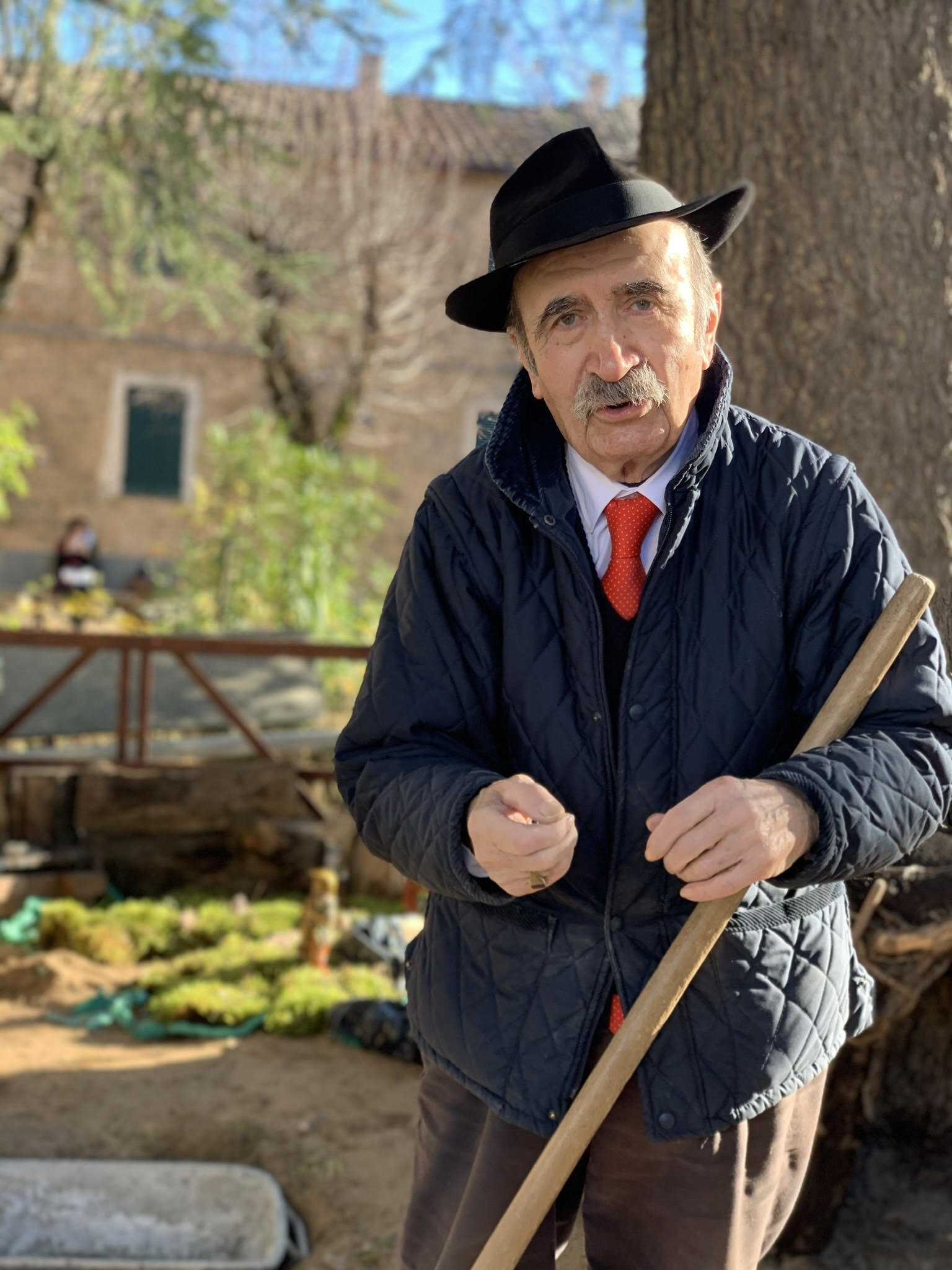La Tita and his labour of love
Anyone who has walked right down Montalcino’s main street will have come across the “giardini”. Here in the summer, older folk rest on the granite benches under the shade of the lime trees and watch the tourists trying to work out the vagaries of the bus timetable (when is a feriale festivo? Does the scolastico run on Saturdays?). The giardini are opposite the Bar Prato where bus tickets can be purchased but on no account is change given for the parking meters all around. There are outdoor tables and the waiting staff have a terrible time of it carrying plates across the road while dodging the traffic. There is a small fish pond, much loved by Montalcino’s children and very well-kept gardens divided by paths.
If you have been to the giardini, you will probably also have encountered Mario Marconi, known in Montalcino as “La Titina”. This nickname was given to him 70 years ago when he was a fifteen year old builder’s assistant, working on the Fortezza walls for the almighty sum of 500 lire a day. As often with Montalcino soprannomi, the nickname came from a chance exchange. “La Titina” was a 1917 song made famous by Charlie Chaplin in Modern Times. The head builder, a man so prodigious in weight he needed two boards to his bench, was apt to sing it as he worked. All it took was Ugone stopping mid-song and calling young Mario “La Titina” once and ever since Mario has been known by that name.
He is a dapper man with a moustache who wears a panama and braces in summer and a tie in winter. He keeps the gardens in order and at Christmas sets up an enormous nativity scene, which spreads across the gardens. This year will be the 22nd year he has set up the presepe. As is common in Italy the scene isn’t restricted to the manger, the main players and the three kings. There are water-carriers and fishermen, bridges and wells, a desert scene with camels (that La Titina often finds re-arranged in suggestive poses during the night) and a whole village with villagers going about their tasks. Each year there are additions and changes; an ambitious palm-tree oasis or home-made ladders for all the miniature olive trees.
Presepe (or presepio) are in most Italian homes, usually set up on the 8th of December and dismantled on 6th January. Statues that have been in the families for generations are unwrapped and moss, stones and olive branches are gathered to make up the hills, paths and trees.
We used to have our own presepe when we lived at Il Palazzone. Marco and the children set it up in the pizza oven, the potential blasphemy seeming to escape nearly everyone. Now we have it in a bookcase in Siena… much more respectable.

